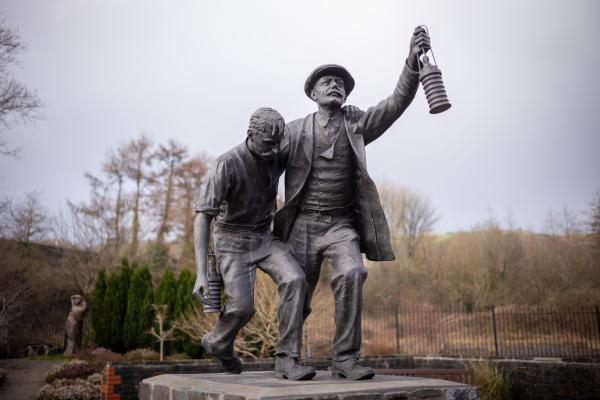National Mining Disaster Memorial Garden of Wales Officially Recognized as a Tribute to Thousands Lost

The Welsh Government has formally recognized the memorial garden in Senghenydd as the National Mining Disaster Memorial Garden of Wales.
This site honours the memory of those lost in British mining’s most catastrophic disaster and has now received the acknowledgment it merits. The memorial garden, which opened on the centennial of the 1913 Universal Colliery explosion that claimed 439 miners’ lives, has been added to Wales’ Statutory Register of Historic Parks and Gardens.
First Minister Mark Drakeford and Deputy Minister for Arts, Sport and Tourism Dawn Bowden have endorsed the site as a significant tribute to the thousands who perished in mining disasters throughout Wales. Drakeford emphasized the enduring significance of mining to Welsh identity and history, especially as the 40th anniversary of the miners’ strikes is commemorated.
The memorial features a bronze statue depicting a rescue worker aiding a survivor, a remembrance wall for the victims of the 1901 and 1913 Senghenydd mining disasters, and a ‘path of memory’ with a tile representing each of the 152 mining disasters in Wales.
First Minister, Mark Drakeford said:
Mining is a big part of our identity as a nation. More than a century after the Senghenydd disasters, and as we mark the 40th anniversary of the miners’ strikes, the legacy of coal is still an essential part of our history.
It is only right that a site of such symbolic importance as Wales’ National Mining Memorial receives formal recognition – honouring the thousands of miners who died in colliery tragedies across Wales, while keeping the culture and memory of pit communities alive.
Many local authorities contributed to the fundraising campaign when the memorial was established in 2013 and on a visit to the garden and nearby Aber Valley Heritage Museum, Deputy Minister for Arts, Sport and Tourism, Dawn Bowden said:
We are conscious that the memorial garden commemorates not just those who died at Senghenydd, but also in mining disasters across the length and breadth of Wales.
It’s such an important site of public commemoration and memory with an important role to play in connecting people with the past so I’m delighted we have been able to give it the recognition it deserves.
Gill Jones, of Aber Valley Heritage Group, added:
We are so very proud that our wonderful Garden of Remembrance has now become the ‘National Mining Disaster Memorial Garden of Wales’ and has been added to the statutory register of historic parks and gardens in Wales.
It is through the determination and hard work of our volunteers, who spend many hours in all-weather to maintain it to the high standards required for such an honour.
It is a lasting legacy by our volunteers to the 530 men and boys killed in the Universal Colliery disasters in 1901 and 1913, as well as the many thousands who died in disasters throughout the Welsh coalfields, all of which are all listed in the garden.





